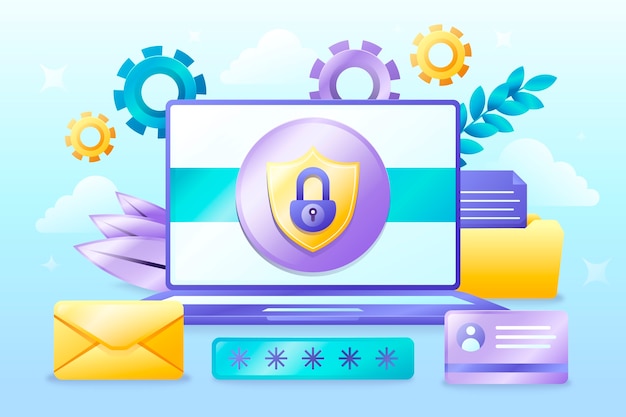Mastering Gmail DMARC: A Comprehensive Guide To Email Security
Email security has become a critical concern for individuals and organizations alike. As cyber threats evolve, it's essential to employ robust measures to protect email communications. One of the most effective strategies in this realm is the implementation of DMARC (Domain-based Message Authentication, Reporting & Conformance). This comprehensive guide will delve into mastering Gmail DMARC to enhance your email security.
Understanding DMARC
What is DMARC?
DMARC stands for Domain-based Message Authentication, Reporting & Conformance. It is an email authentication protocol designed to give email domain owners the ability to protect their domain from unauthorized use, commonly known as email spoofing. By implementing DMARC, domain owners can specify which mechanisms (SPF and/or DKIM) are employed when sending emails and how receiving mail servers should handle unauthenticated emails.
The Components of DMARC
DMARC builds on two existing email authentication technologies:
- SPF (Sender Policy Framework): SPF allows domain owners to specify which mail servers are permitted to send email on behalf of their domain.
- DKIM (DomainKeys Identified Mail): DKIM provides a way to sign emails with a domain's private key, allowing recipients to verify the email's origin and integrity.
DMARC adds a layer of policy enforcement and reporting on top of SPF and DKIM.
Benefits of Implementing DMARC

Enhanced Security:
Implementing DMARC significantly enhances email security by reducing the risk of email spoofing and phishing attacks. It ensures that only authorized senders can use your domain, preventing malicious actors from impersonating your brand. By verifying email authenticity through SPF and DKIM checks, DMARC helps maintain the integrity of your communications. This robust security measure protects both your organization and its recipients from potentially harmful emails.
Brand Protection:
DMARC plays a crucial role in brand protection by preventing unauthorized use of your domain in fraudulent activities such as phishing scams and email spoofing. By enforcing authentication measures like SPF and DKIM, DMARC ensures that emails sent from your domain are legitimate, maintaining trust and credibility with your audience. This proactive approach safeguards your brand's reputation, preserving its integrity and reducing the risk of reputational damage due to cyber threats.
Increased Visibility and Deliverability:
Implementing DMARC provides increased visibility into your email ecosystem by generating detailed reports on email authentication results. These insights enable you to identify and address any issues promptly, ensuring the integrity of your email communications. Additionally, DMARC improves deliverability by reducing the likelihood of legitimate emails being mistakenly marked as spam. By enhancing deliverability, DMARC helps ensure that your messages reach their intended recipients efficiently, maximizing the effectiveness of your email campaigns and communications.
Setting Up DMARC for Gmail
Setting up DMARC for Gmail involves several key steps:

Configure SPF and DKIM:
To configure SPF (Sender Policy Framework), add a DNS record listing authorized mail servers for your domain, preventing email spoofing and enhancing deliverability. For DKIM (DomainKeys Identified Mail), generate a unique cryptographic signature for each outgoing email, verifying its integrity and authenticity. These authentication protocols work together to bolster your domain's reputation and protect against phishing attacks.
Create a DMARC Record:
To create a DMARC record, specify your desired policy for handling unauthenticated emails, such as "none," "quarantine," or "reject." Additionally, include URIs for receiving aggregate (rua) and forensic (ruf) reports, allowing insight into email authentication results. Add this record to your domain's DNS settings as a TXT record with the name "_dmarc.yourdomain.com", ensuring proper formatting and accuracy for effective email authentication and monitoring.
Add DMARC Record to DNS:
To add a DMARC record to your DNS, access your domain's DNS settings through your domain registrar or hosting provider. Create a new TXT record with the name "_dmarc.yourdomain.com" and paste the DMARC record containing your desired policy and reporting URIs. Save the changes, allowing the DNS record to propagate, ensuring email servers recognize and enforce your DMARC policy. Regularly monitor DMARC reports to optimize email authentication and security.
Best Practices for DMARC Implementation
- Start with a Relaxed Policy: Begin with a "none" policy to monitor email authentication without affecting delivery, allowing you to identify legitimate sources.
- Gradually Enforce Policies: Move to stricter policies like "quarantine" or "reject" once you're confident in your email sources, minimizing disruptions.
- Regularly Review and Adjust: Continuously monitor DMARC reports, SPF, and DKIM settings to ensure ongoing protection and optimize email deliverability.
- Educate Your Team: Provide training on email security best practices to your team, including awareness of phishing scams and the importance of DMARC compliance, to further fortify your defenses.
Troubleshooting Common Issues
Low DMARC Alignment
Low DMARC alignment occurs when the domain in the "From" address of an email does not align with the domains used in SPF and DKIM authentication. This misalignment can lead to DMARC failures and increase the risk of email spoofing and phishing attacks. To address this issue, ensure that all email authentication mechanisms align with your domain to improve DMARC alignment and enhance email security. Regular monitoring and adjustments are essential to maintain high DMARC alignment rates and protect your organization from malicious activities.
Missing SPF or DKIM
Missing SPF (Sender Policy Framework) or DKIM (DomainKeys Identified Mail) authentication mechanisms can result in DMARC failures and compromise email security. SPF verifies the legitimacy of the sending server, while DKIM ensures the integrity of the email's content. To prevent issues, ensure both SPF and DKIM are properly configured for your domain. Regularly monitor authentication mechanisms to maintain compliance with DMARC policies and enhance email security. Access detailed specifics with just one click.

